Smartphone landscape photography has reached remarkable heights in 2025, with devices like the Samsung Galaxy S25 Ultra’s 200MP sensor and iPhone 16 Pro Max’s advanced computational photography creating images that rival traditional cameras. The key difference between amateur phone snapshots and professional-looking landscapes isn’t the device—it’s the technique.
Modern smartphones excel at landscape photography because they combine powerful sensors with intelligent processing, multiple focal lengths, and advanced features like RAW capture and manual controls. Professional landscape photographers increasingly use phones as primary tools for scouting, backup cameras, and even final deliverables for social media and smaller prints.
The accessibility of smartphone landscape photography has democratized the art form, allowing anyone to capture stunning outdoor scenes without investing thousands in camera equipment. However, maximizing your phone’s landscape potential requires understanding its unique strengths and limitations, then adapting traditional photography principles to work within these constraints.
Table of Contents
- Essential Smartphone Features For Landscapes
- Advanced Smartphone Composition Techniques
- Technical Settings For Various Conditions
- Pro-Level Editing Workflows for Smartphone Landscape Photography
- Overcoming Smartphone Limitations
- Advanced Smartphone Landscape Techniques
- Gear Recommendations Under $100
- Common Mistakes And Solutions
Essential Smartphone Features for Landscapes
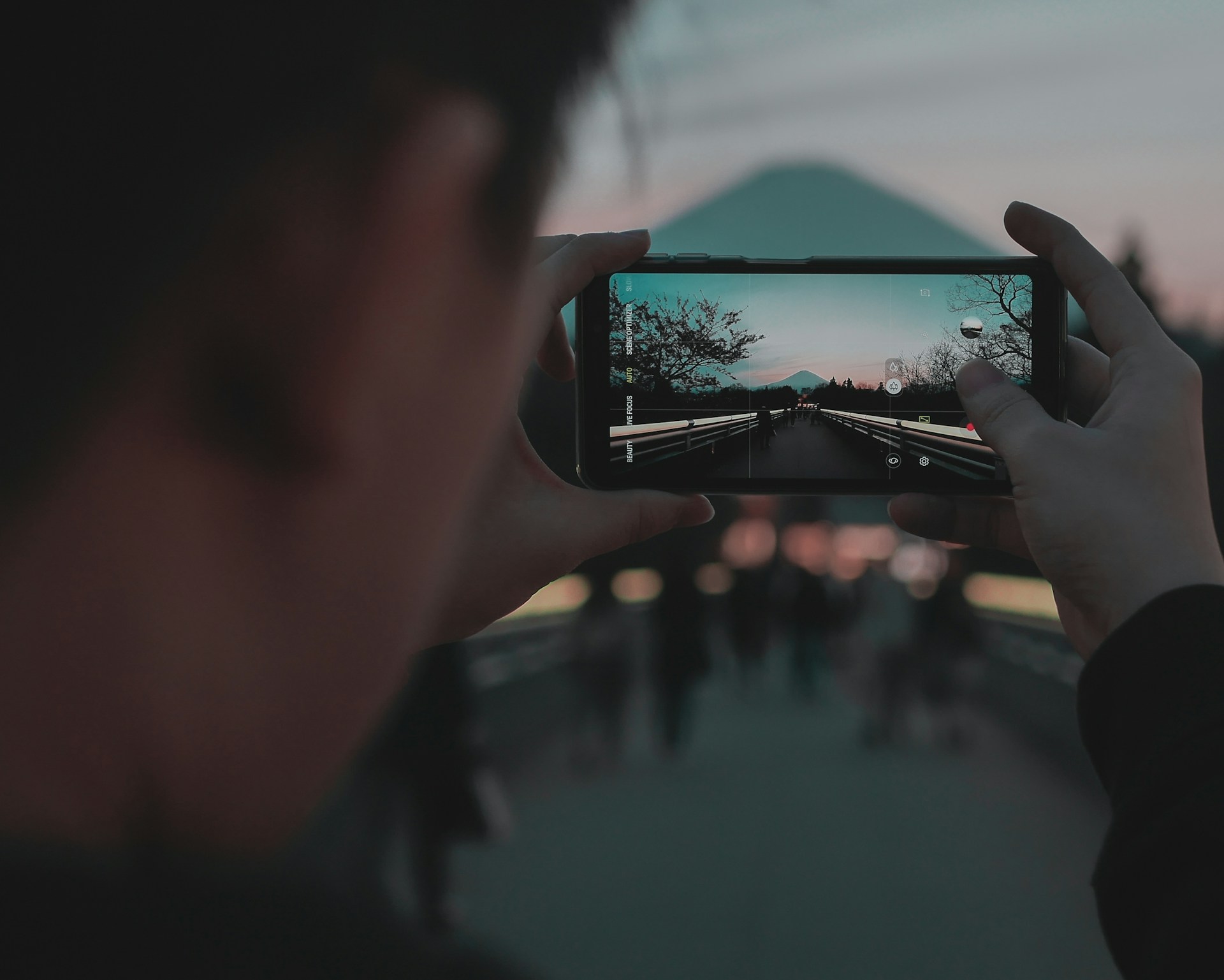
Photo by Christofer Tan on Unsplash (license)
Camera settings mastery forms the foundation of professional smartphone landscape photography. Switch to your phone’s Pro or Manual mode to gain control over ISO, shutter speed, and white balance. Most phones default to automatic HDR, which works excellently for high-contrast landscape situations but can create unnatural looks in subtle lighting.
RAW format capture provides maximum editing flexibility, allowing you to recover blown highlights and lift shadows that would be impossible with JPEG files. The Samsung Galaxy S25 Ultra and iPhone 16 Pro Max both offer excellent RAW support, with files containing significantly more color and tonal information than their JPEG counterparts.
Multiple lens utilization transforms composition possibilities. Use the ultra-wide lens (0.5x) for expansive vistas and dramatic foreground emphasis, the standard lens (1x) for natural perspective landscapes, and telephoto lenses (3x or higher) for isolating distant mountain peaks or creating compressed perspectives that stack landscape elements.
Enable grid lines to improve composition using the rule of thirds, and take advantage of focus control by tapping specific areas of your screen rather than relying on autofocus. Most phones allow you to lock focus and exposure separately, preventing unwanted changes as lighting conditions shift.
Advanced Smartphone Composition Techniques
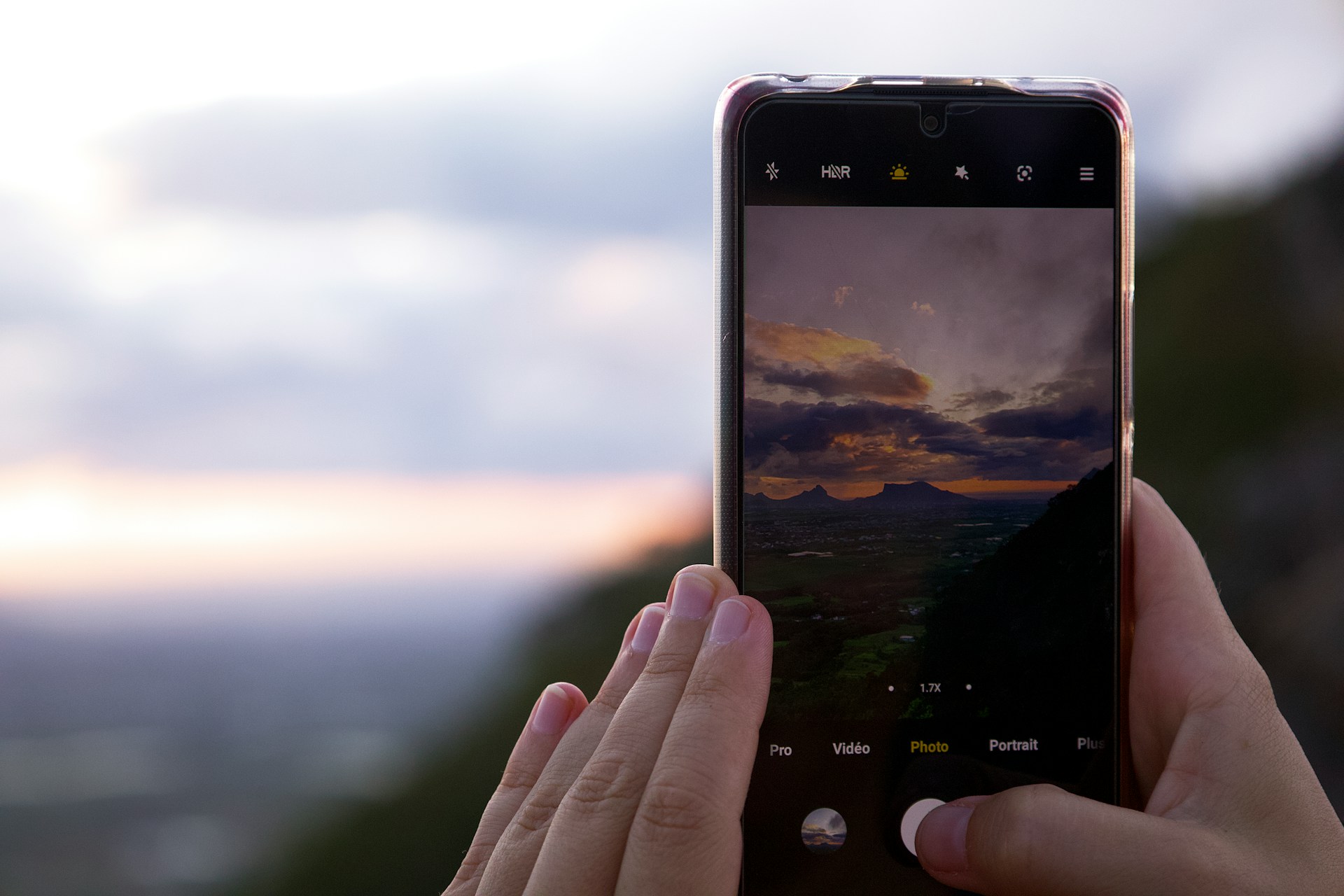
Photo by Miguel Alcântara on Unsplash (license)
Get extremely close to foreground elements to leverage your phone’s natural wide-angle perspective and excellent close-focusing capabilities. Smartphones can often focus just inches away from subjects, creating dramatic compositions with flowers, rocks, or interesting textures filling the bottom third of your frame while distant landscapes provide context.
Embrace vertical compositions for smartphone landscape photography more than you would with traditional cameras. Phone screens are optimized for vertical viewing, and many landscapes work beautifully in portrait orientation—waterfalls, tall trees, canyon walls, and dramatic skies all benefit from vertical framing that maximizes your phone’s natural aspect ratio.
Use leading lines creatively by positioning roads, coastlines, or architectural elements to draw viewers into your landscape. Phone cameras’ slightly wider field of view compared to standard lenses makes leading lines more pronounced and effective at creating depth.
Master the flip technique for reflection photography. Turn your phone upside down to capture puddle reflections without risking water damage to your device. This technique works particularly well for urban landscapes and morning dew scenarios where getting the phone close to water creates more compelling reflections.
Technical Settings for Various Conditions
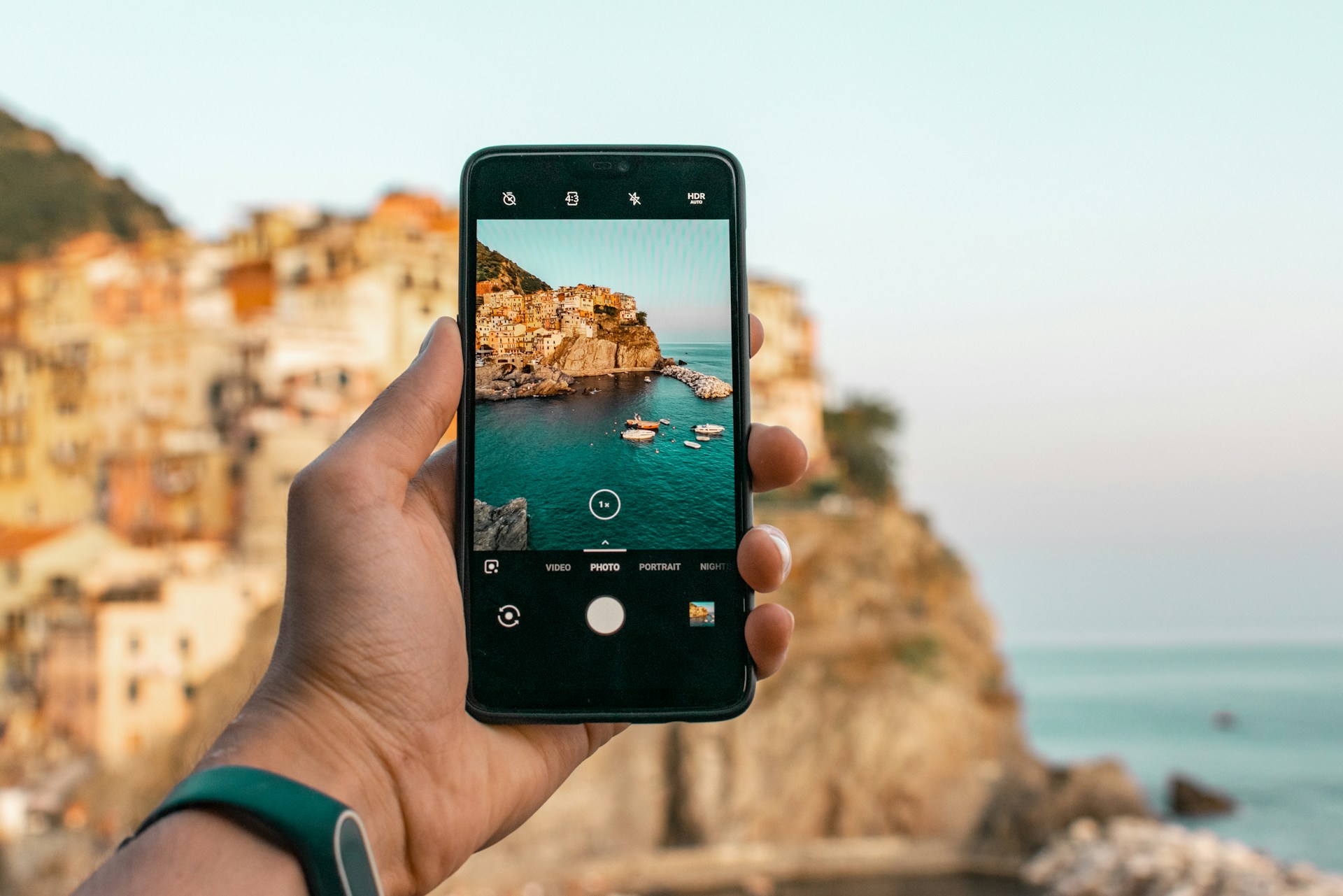
Photo by Dominik Dancs on Unsplash (license)
Golden hour optimization requires adjusting white balance to enhance warm tones. Set white balance to “Cloudy” or “Shade” mode, or manually adjust to 2500-3000K to amplify the golden light’s natural warmth for your smartphone landscape photography. Keep ISO between 64-200 for optimal image quality, and use your phone’s built-in HDR sparingly to maintain natural contrast.
Blue hour mastery benefits from cooler color temperatures. Switch white balance to “Tungsten” or manually set to 3200K to enhance blue tones in the sky. Blue hour provides the perfect balance between ambient light and artificial lighting, making it ideal for urban landscapes and cityscapes where building lights complement twilight skies.
Overcast conditions offer excellent smartphone landscape opportunities because phones excel in even, diffused lighting. Switch to black and white mode or plan to convert in post-processing, as gray skies often work better in monochrome. Focus on textures, patterns, and intimate landscape details that benefit from soft, shadow-free lighting.
Storm photography requires weather protection but offers dramatic results. Use a simple plastic bag or dedicated phone rain cover, and shoot from safe distances while using your phone’s zoom capabilities to capture lightning and dramatic cloud formations without risking equipment or personal safety.
Pro-Level Editing Workflows for Smartphone Landscape Photography
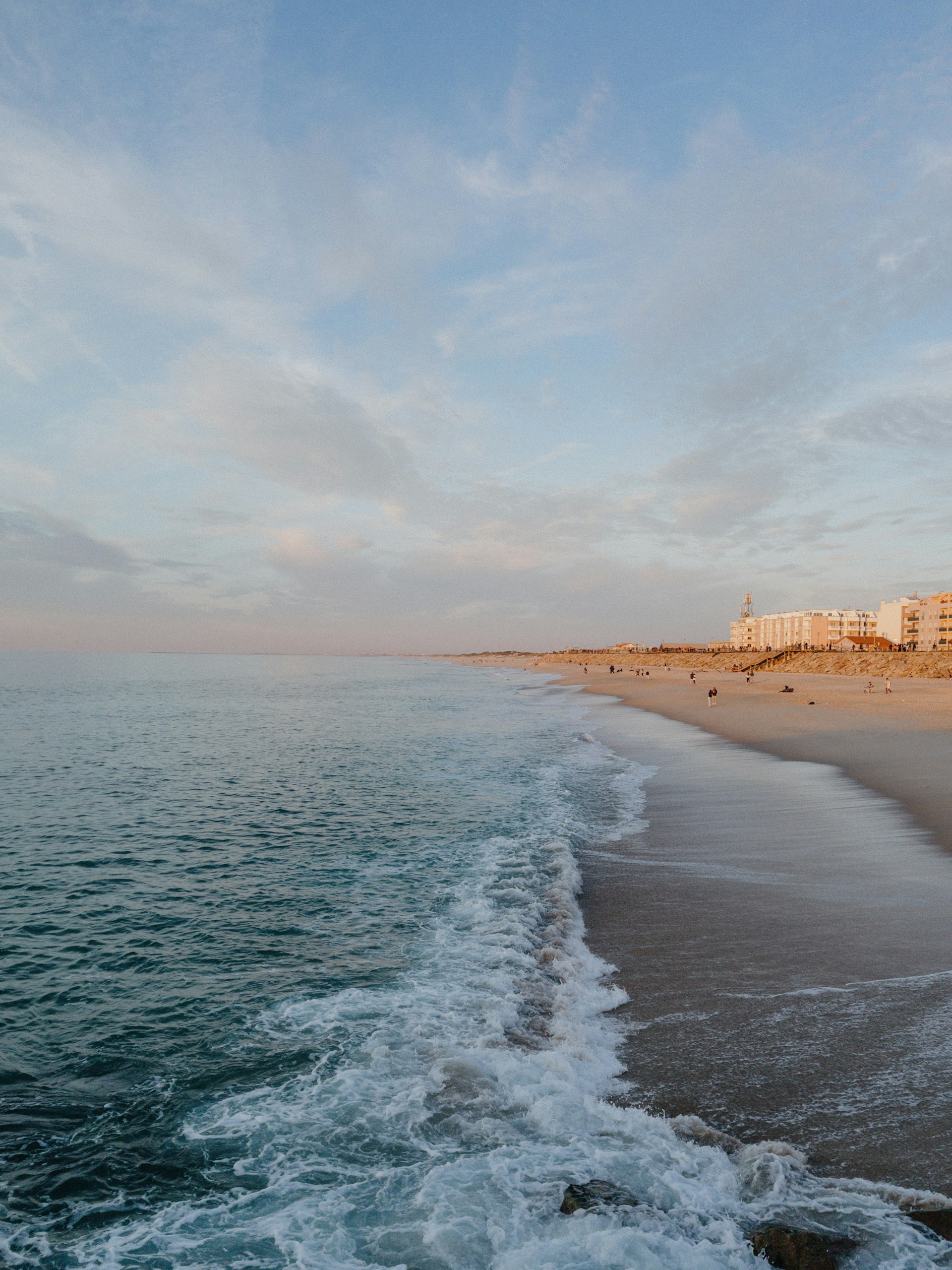
Photo by Ricardo Resende on Unsplash (license)
RAW processing apps like Adobe Lightroom Mobile, VSCO, or Snapseed provide professional-grade editing capabilities directly on your phone. Start with basic adjustments—exposure, highlights, shadows, and whites—before moving to color grading and local adjustments.
Graduated filter techniques replicate traditional filters digitally. Use Lightroom’s graduated filter to darken bright skies or brighten foregrounds, creating balanced exposures that would require expensive neutral density filters with traditional cameras. The key is subtlety—overdoing digital filters creates unnatural looks.
Color grading for mood transforms ordinary landscapes into compelling images. Slightly warm shadows and cool highlights create depth and dimension, while consistent color treatment across a series of images builds a professional portfolio aesthetic.
Sharpening and noise reduction deserve special attention with smartphone files. Most phones apply some processing automatically, so avoid over-sharpening in post. Instead, focus on selective sharpening of key areas like mountain peaks or foreground details while maintaining natural textures.
Overcoming Smartphone Limitations
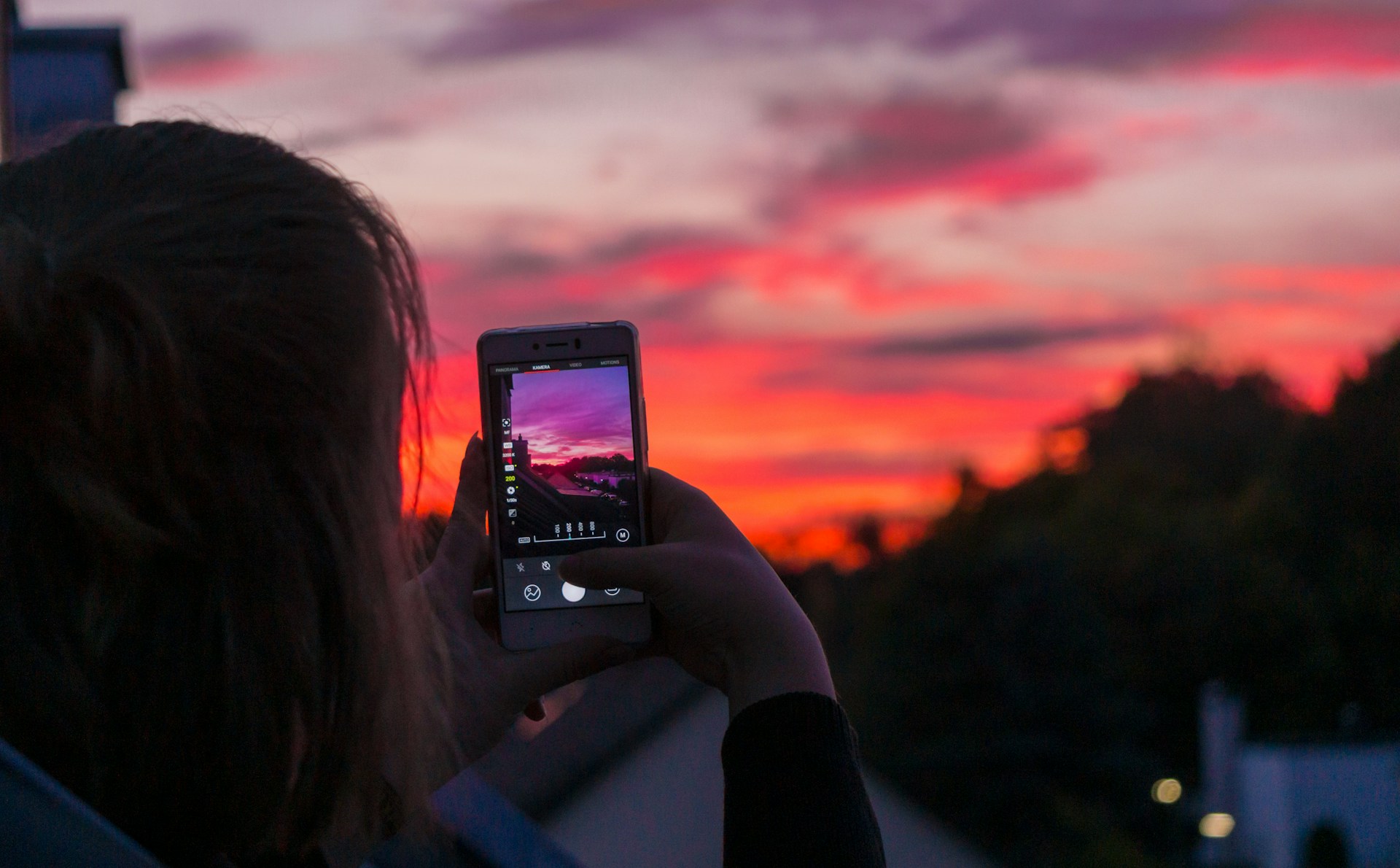
Photo by Herbert Grambihler on Unsplash (license)
Dynamic range challenges can be addressed through exposure bracketing and blending. Take multiple exposures of high-contrast scenes—one for highlights, one for shadows—then blend them in editing apps like Photomatix or manually in Lightroom. This technique provides more natural results than aggressive single-frame HDR processing for your smartphone landscape photography.
Stability solutions become crucial for longer exposures and precise compositions. Invest in a smartphone tripod adapter and small travel tripod, or use creative stabilization techniques like bracing against rocks, trees, or architectural elements. Even a small, $30 smartphone tripod dramatically improves image sharpness.
Battery management requires planning for extended shooting sessions. Cold weather drains batteries faster, and intensive features like GPS, Wi-Fi, and processing consume power quickly. Carry backup power banks rated for at least 10,000mAh, and consider airplane mode when shooting in remote areas to preserve battery life.
Storage limitations can be managed through cloud backup and selective shooting. Enable automatic upload to Google Photos or iCloud when Wi-Fi is available, and shoot RAW+JPEG to maintain editing flexibility while having smaller backup files. Consider investing in higher-capacity phone storage for serious landscape work.
Advanced Smartphone Landscape Techniques
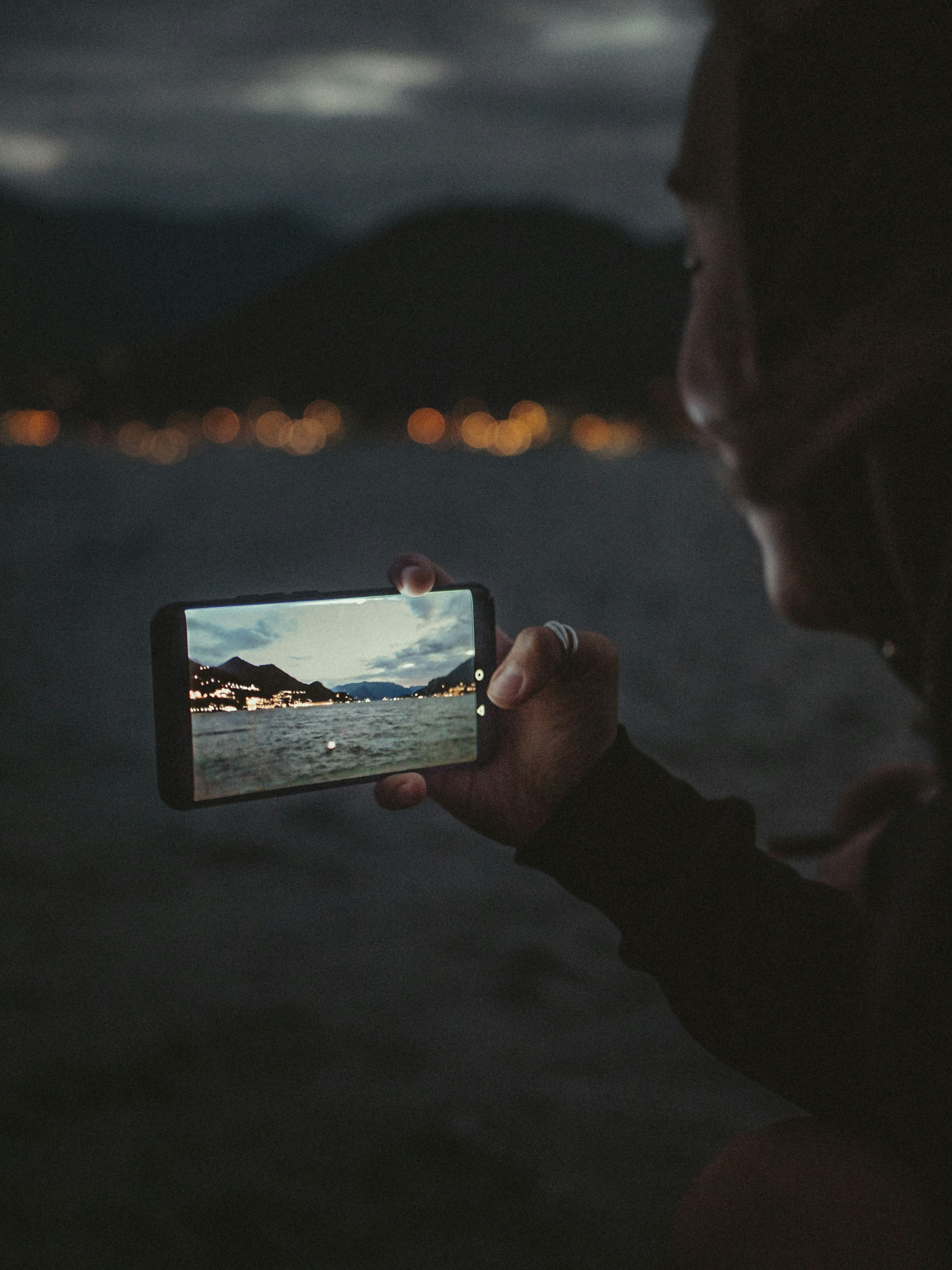
Photo by Erica Magugliani on Unsplash (license)
Focus stacking creates sharp foregrounds and backgrounds beyond what single exposures achieve. Take multiple images focusing from near to far, then blend them using apps like Helicon Focus Mobile or desktop software. This technique works particularly well for intimate landscapes with close foreground elements. This technique alone can really elevate your smartphone landscape photography.
Long exposure simulation can be achieved through apps like Slow Shutter Cam or by using your phone’s built-in night mode creatively. While not true long exposures, these techniques create smooth water and cloud movement effects that enhance landscape mood and atmosphere.
Panoramic landscapes benefit from your phone’s built-in panorama mode, but manual stitching often provides better results. Take overlapping images with consistent exposure settings, then stitch in specialized apps or desktop software for maximum resolution and control.
Macro landscape details showcase your phone’s excellent close-focusing capabilities. Capture intimate scenes like dewdrops, bark textures, rock patterns, and flower details that complement wider landscape views. These intimate images often have more impact than grand vistas because phones excel at close-focusing performance.
Gear Recommendations Under $100
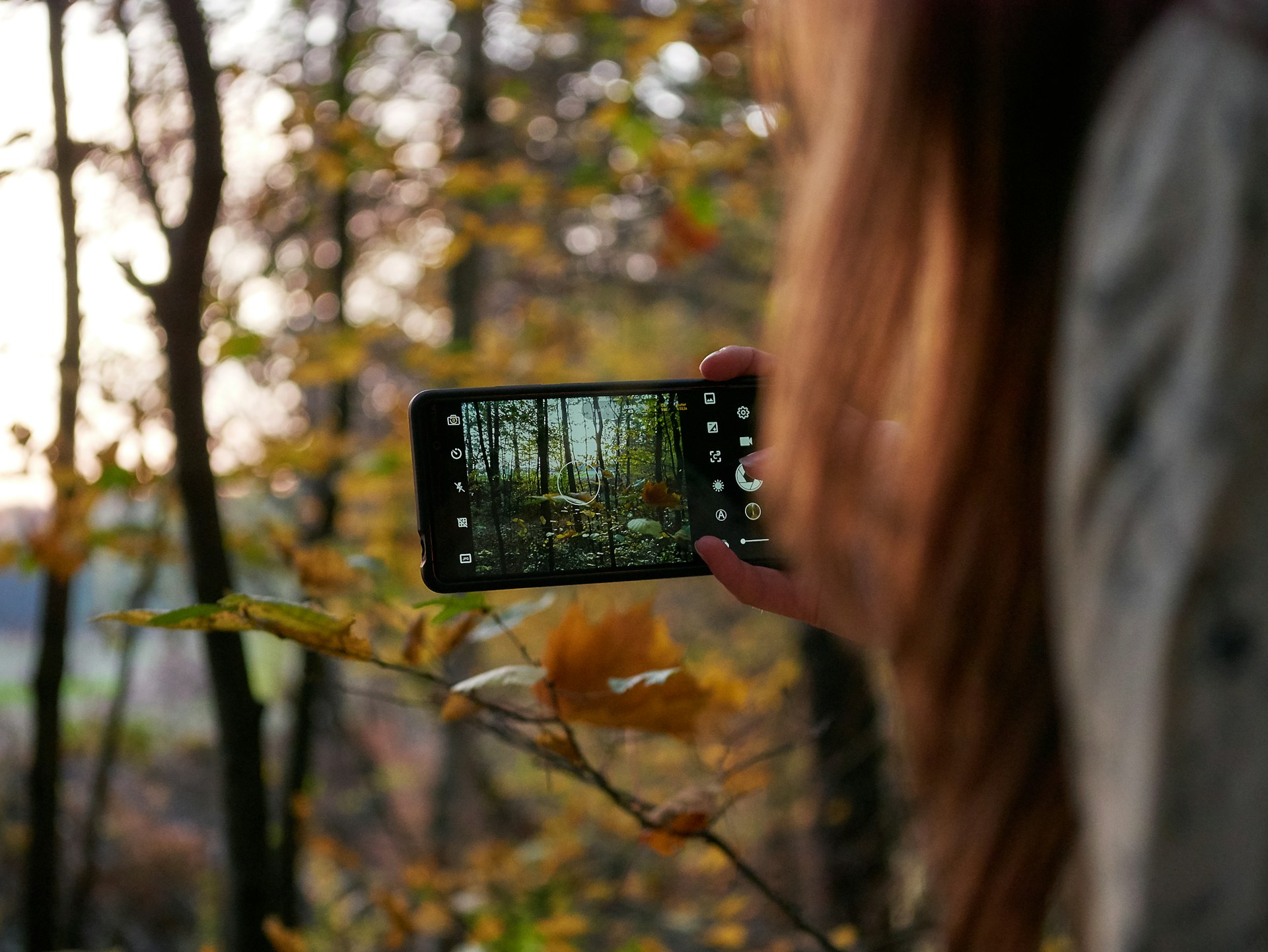
Photo by Michał Bożek on Unsplash (license)
Smartphone tripod adapters from Peak Design or Joby provide secure mounting for serious landscape work. Look for adapters with multiple orientation options and cold shoe mounts for accessories.
Clip-on lens filters from Moment or Sandmarc add functionality without bulk. Circular polarizing filters reduce reflections and enhance sky contrast, while neutral density filters enable longer exposures for smooth water and cloud movement, which enhances your smartphone landscape photography in a way no other technique can.
Protective cases designed for outdoor photography should provide weather sealing while maintaining camera access. Look for cases with lanyard attachment points and lens protection that doesn’t interfere with image quality.
Power solutions include compact power banks with fast charging capabilities and possibly wireless charging for compatible phones. Solar power banks work well for multi-day hiking adventures where traditional charging isn’t available.
Common Mistakes and Solutions
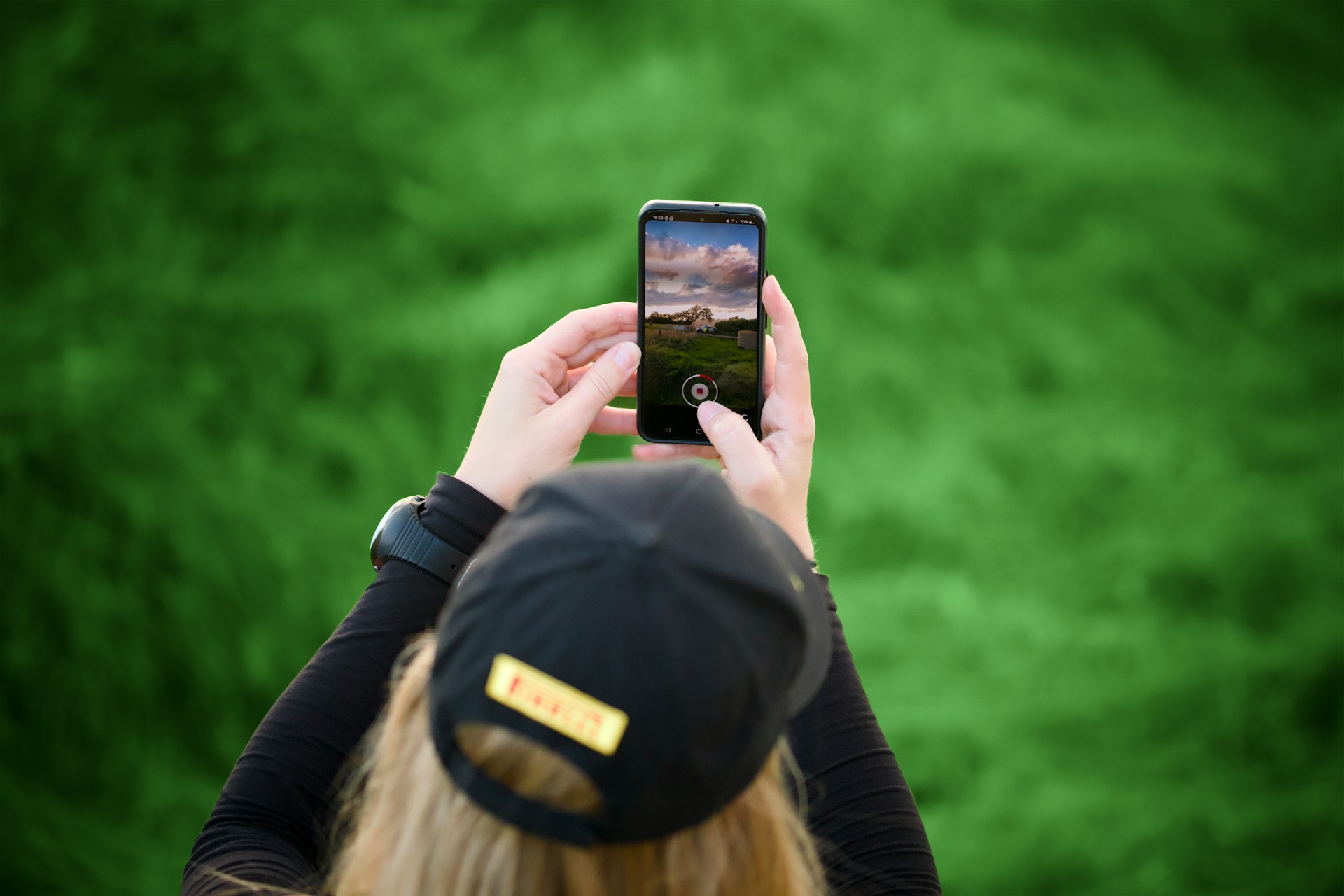
Photo by theLine on Unsplash (license)
Over-reliance on automatic modes limits creative potential. While phone cameras excel at computational photography, manual control over exposure and focus provides more consistent and creative results, especially in challenging lighting conditions.
Ignoring composition fundamentals because phone photography feels casual. Apply the same compositional principles you would use with any camera—rule of thirds, leading lines, foreground-middle ground-background relationships, and careful attention to frame edges.
Excessive HDR processing creates unnatural, over-saturated images that look obviously processed. Use HDR sparingly and adjust intensity settings to maintain realistic lighting while improving dynamic range.
Neglecting post-processing wastes your phone’s RAW capture capabilities. Even basic adjustments to exposure, color balance, and contrast significantly improve image quality and create more professional-looking results.
Hero photo by Herbert Grambihler on Unsplash (license)

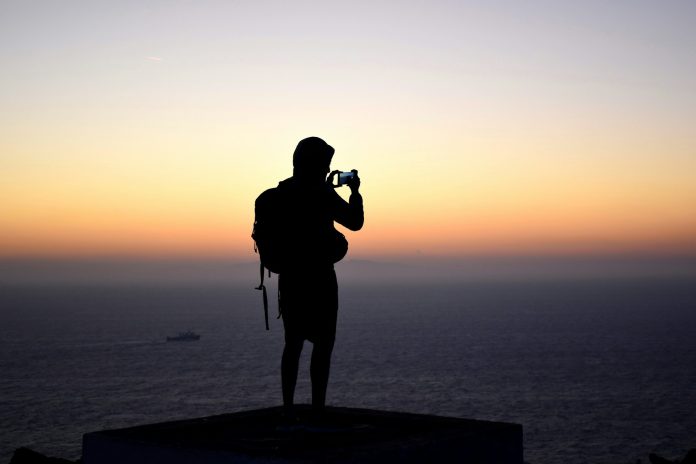
Great read! Even though I mainly take my camera to take pictures, but I also love using my phone for landscapes. Sometimes with a phone, set to wide angle, I get more in the picture as when I use my wide angle on my camera. With the right technique, it’s amazing how great results can be made with a smartphone. I love it here and there. Especially when I took a sunrise in Africa, my camera just could not get all in, but my smartphone did. 😀